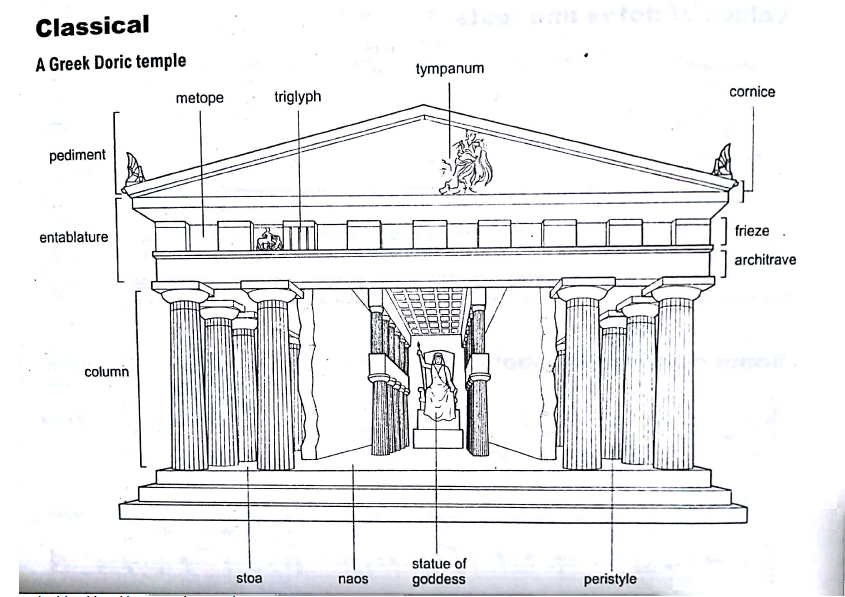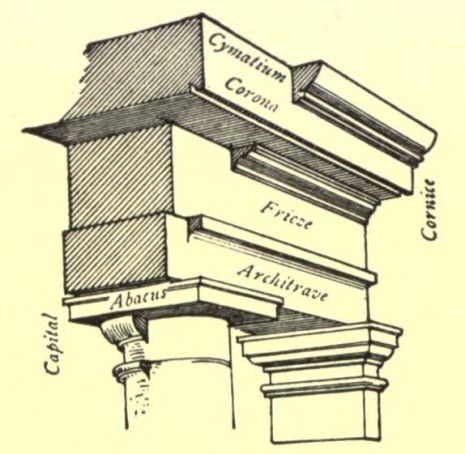Cornice Definition Architecture

Specifically, the uppermost of the three principal members of the classic entablature entablature, the entire unit of horizontal members above the columns or pilasters in classical architecture—Greek, Roman or Renaissance.
Cornice definition architecture. In Ancient Greek architecture and its successors using the classical orders in the tradition of classical architecture, the cornice is the topmost element of the entablature, which consists (from top to bottom) of the cornice, the frieze, and the architrave.. In modern domestic architecture Rake. The questions contained in this short multiple-choice quiz and worksheet will test your knowledge of cornices in architecture. However, dentil molding can form a decorative band anywhere on a structure.
Cresting A decorative design along the ridge of a roof, cornice, About This Quiz & Worksheet. It is in this case divided into three. In context|architecture|lang=en terms the difference between cornice and architrave is that cornice is (architecture) a horizontal architectural element of a building, projecting forward from the main walls, originally used as a means of directing rainwater away from the building's walls see also:
Shaft - the main body of a column of pier between base and capital. A strip of molding that runs along the upper part of a wall just below the ceiling. The use of dentils is strongly associated with Classical (Greek and Roman) and Neoclassical (Greek Revival) architecture. It describes an area or space that overhangs something else.
Cornice in Architecture topic From Longman Dictionary of Contemporary English cornice cor‧nice / ˈkɔːnɪs $ ˈkɔːr- / noun [ countable ] AA wood or plaster that runs along the top edge of a wall, used for decoration A carved cornice runs around the high-ceilinged room. Specifically, the uppermost of the three principal members of the classic entablature entablature, the entire unit of horizontal members above the columns or pilasters in classical architecture—Greek, Roman or Renaissance. A dentil (from Lat. Rib Band - A board set into the inside face of the stud to support a second floor joist..
Raking cornice definition, either of two straight, sloping cornices on a pediment following or suggesting the slopes of a roof. Cornice - furnish with a cornice architecture - the discipline dealing with the principles of design and construction and ornamentation of fine buildings; The uppermost part of an entablature. Dentil definition is - one of a series of small projecting rectangular blocks forming a molding especially under a cornice.
A projecting, decorative strip above a window, designed to keep a curtain rod from showingOrigin of corniceFrench from... Molding, in architecture and the decorative arts, a defining, transitional, or terminal element that contours or outlines the edges and surfaces on a projection or cavity, such as a cornice, architrave, capital, arch, base, or jamb. | Meaning, pronunciation, translations and examples "architecture and eloquence are mixed arts whose end is sometimes beauty and sometimes use".
Return - A wooden member nailed between the rafter-end and the stringer for bed board support. As space is a noun, cornice is also a noun. Cornice (architecture) synonyms, Cornice (architecture) pronunciation, Cornice (architecture) translation, English dictionary definition of Cornice (architecture). The uppermost part of an entablature.
The surface of a molding is modeled with recesses and reliefs, Crown molding is not a cornice, but if the molding hangs over something, like a window or air vent, the. Raking cornice - upper frame of the pediment, below the roof line. Cornice (plural cornices) ( architecture ) A horizontal architectural element of a building , projecting forward from the main walls , originally used as a means of directing rainwater away from the building's walls.
Cornice (kôr`nĭs), molded or decorated projection that forms the crowning feature at the top of a building wall or other architectural element; The term is used as well for any projecting element that crowns an architectural feature, such as a doorway. Cornice coving and architrave definitions The terms cornice , coving and architrave are frequently used incorrectly, or used as if they are interchangeable. An ornamental horizontal molding or frame used to conceal rods, picture hooks, or other devices.
Cornice, in architecture, the decorated projection at the top of a wall provided to protect the wall face or to ornament and finish the eaves. A cornice is a profiled moulding used to conceal the joint between a wall and a ceiling so that it does not have to be finished and any cracking along the joint is hidden. A horizontal molding projecting along the top of a wall, building, etc. Look it up now!
Dentil molding usually projects below the cornice, along the roof line of a building. A cornice is also specifically the top member of the entablature (q.v.) of a Classical order (see order); Cornice (kôr`nĭs), molded or decorated projection that forms the crowning feature at the top of a building wall or other architectural element; A rake is an architectural term for an eave or cornice which runs along the gable of the roof of a.
A cornice is a strip of plaster , wood, or stone which goes along the top of a wall or... A strip of molding that... Corona The overhanging vertical member of a cornice in classical architecture. In Classical Greek architecture, the cornice was the top element of the entablature, the horizontal section of a building exterior immediately above a series of columns and below the roof.
Glossary of Architectural Terms Page 25 Cornice Return Is the term for the continuation of a cornice, either back to the wall where it terminates, or in a change direction, at a gable end. In Classical architecture, and even Neoclassical, a cornice is the uppermost horizontal area that protrudes or sticks out, like moldings along the top of a wall or just below a roof line. The top part of an entablature 3.



















